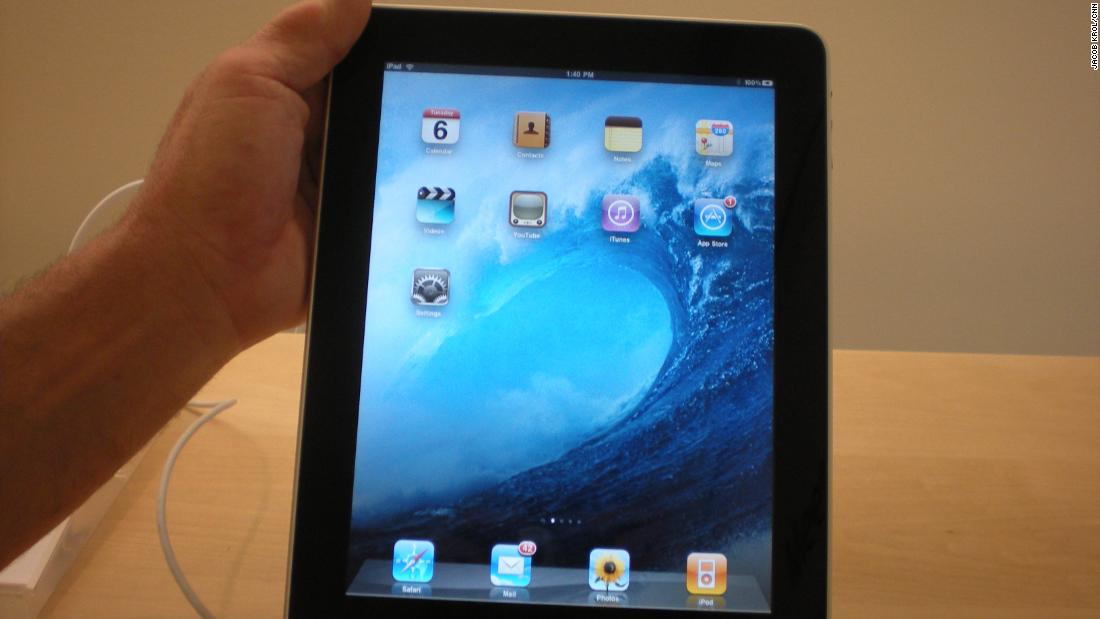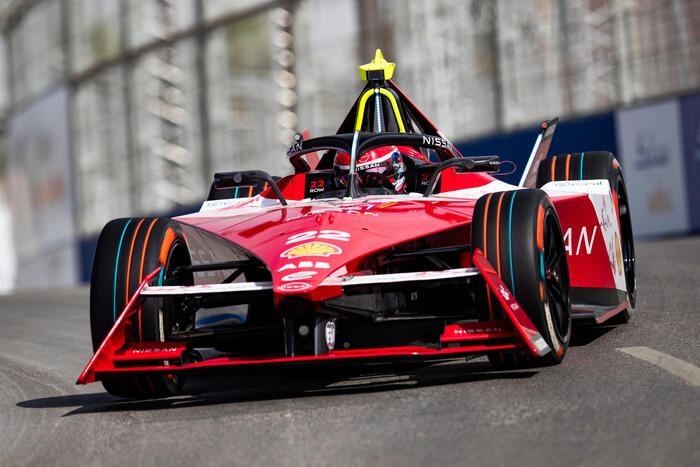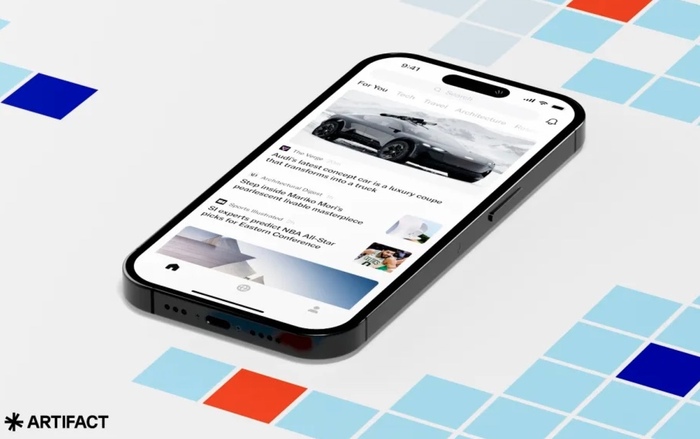It is crazy to think about it but it is almost 2020. When the ball falls in Times Square, we will begin a new decade.
The latter brought many technological innovations, from phones and loud voices to computers and smart devices, and a real boom in the internet of things. But not all products have the same impact. Great innovation and cultural adoption is needed to really change technology.
We have worked hard to reduce the list of products and find the 10 devices that really changed the technology in the last decade, and also to specify exactly why they are innovations that we will admire and contemplate in the coming years.
Apple iPad
Apple announced the iPad in 2010, and since then it has slowly transformed into a computer substitute for many (including us). But what has allowed him to earn his place on the list is not the gradual transformation of a device that many critics considered simply a large iPhone when it hit the market.
Before the iPad, netbooks began to consolidate as the mobile computing platform of the future. Then the iPad was launched and it became clear that laptops with 7-inch screens would not go anywhere. The tablets were the future.
Since the introduction of the iPad, we have seen the Microsoft Surface line take off and become one of the best experiences with Windows tablets on the market. We have also seen Google try its luck with Android tablets, but it has abandoned that initiative in favor of ChromeOS tablets. Samsung continues to keep the dream of Android tablets alive with the recently launched Galaxy Tab S6.
From our point of view, the iPad changed the way we work and interact with computers. Staring at a screen and using a mouse or touchpad to click on things suddenly felt outdated.
With the recent launch of Apple iPadOS, a dedicated operating system, the next 10 years could bring even more surprises.
Iphone 4
Apple's iPhone 4 not only presented possibly the best iPhone design Apple has ever had, but it was the first iPhone to have a front camera to justify the launch of FaceTime, Apple's video chat service.
When we looked at the leaks and rumors about the ability to make a video call through a cellular connection before the announcement of the iPhone 4 in 2010, we doubted that such a futuristic feature was about to become a reality.
Now it is difficult to remember the time when we could not talk on FaceTime with our wife or husband or with our children during a business trip, but add a front camera to the iPhone and give conventional users the ability to make video calls from anywhere It was transformative.
Samsung Galaxy Note
In 2011 large phones were not fashionable; in fact, they were feared a little. Samsung's original Galaxy Note debuted that year and had a 5.3-inch Super AMOLED screen. It was the first phablet that conquered the market, and the loyalists to the Note line are still big fans to this day. It's the reason we love Note 10+ so much and why fans have stayed true to the brand.
It wasn't just the big screen. Now the 10+ note has a much larger screen, 6.4 inches. The S Pen also stole the spotlight. Yes, it was a pencil, but it changed the perception of the Galaxy Note and transformed it into something closer to an artist's notebook or a quick notebook, and in its most basic form, a new way of navigating the operating system. And it fitted directly on the bottom of the phone to be removed only when necessary.
That new form of contribution and creativity really continues to excite us in 2011. The original Galaxy Note was destined to be different in a sea of smartphones all the same. It was marketed for its creativity and presented some new ways to interact. Everyone ended up succumbing to the big screen, including Apple, LG, Motorola and HTC. The S Pen has also left its mark. LG tested a phone with a pencil and even Apple ended up adopting one for the iPad.
Microsoft Surface
Microsoft has always created software, but it wasn't until 2012 that it built its first PC, the well-known and beloved Surface. That year, Microsoft presented its first piece of hardware in early summer, but did not send the first to stores until mid-fall. Technically it was called Surface RT and it was running Windows RT, but it had the same design spirit as today's Surface Pro 7 and Pro X.
It was a tablet with high-tech hardware that featured a built-in support foot and a modern design. Of course, it was combined with a keyboard that could be easily connected, and had an optional stylus. But really what he achieved was to lay the groundwork for what a 2 in 1 could achieve. Other original Windows equipment manufacturers were already testing new designs (Lenovo Yoga certainly stands out on the list), but Microsoft's support had a catalytic effect on the industry.
The Surface line is still standing as an offer of high-end computers that fulfills that promise of a 2 in 1, essentially a new form factor with the hardware of a high-performance laptop but that does not compromise portability.
Pebble Smart Watch
Today's Apple Watch may not exist if it had not been for Pebble. The first Pebble watch made its debut in 2012 on the Kickstarter crowdfunding website. The campaign raised $ 10.3 million, which showed that there was a latent demand for a wrist computer that allowed its users to view and interact with notifications from their smartphones, control music or view fitness statistics.
Fitbit may have been the leading “wearable” electronics device company at the time, but Pebble started what eventually became the smart watch industry, inspiring Apple, Samsung, Google and many more. Throughout the decade, Pebble released several updates and new models, adding features such as a color screen and better integration of health information.
Pebble was finally sold to Fitbit, which recently announced its incorporation into Google.
Ring
You probably heard about Ring when talking about smart bells. Today he fights in a market against brands such as Nest, Arlo, Eufy and many others. But before Ring was Ring, the company, founded in 2013, became known as Doorbot. The founder originally launched it in "Shark Tank", but was rejected, decided to change the name and ended with an acquisition of Amazon in 2018.
The reason why it is on this list is the ease of use and true innovation in a category that seemed little destined for digital transformation. Before Ring hit the market, video timbres were expensive and complicated, and there was not much innovation. Sure, there were wireless settings, but most people still had a traditional doorbell or mechanical doorbell at home.
Ring offered a piece of simple technology that wasn't too annoying, but that allowed you to have a panoramic view of the front yard and connect when someone rang the bell, providing a new level of security and an easy way to communicate with whoever reached the door. door.
Amazon Echo
Alexa is omnipresent now. The digital assistant is in thousands of ads, and people of all ages have probably interacted with it in some way. But Alexa is very young. He was just born in 2014, specifically in March of that year. That was when some selected Amazon Prime members had the opportunity to order the first generation Echo smart speaker. It was a tall cylindrical black metal speaker with a bright light on top. You could turn it to adjust the volume or mute the microphone, and it even had a button for certain functions.
But the most important thing was that it housed Alexa. The virtual assistant's brain was inside. At the beginning, in 2014, I was eager to learn and discover the world. You could ask him questions or request a music track. And yes, I had a deep integration with the Amazon store from the start.
When a virtual assistant like this causes a stir, it forces others to innovate. Google improved and continues to develop Assitant, the same goes for Apple Siri, and Samsung is still working on Bixby. Meanwhile, Amazon continues to invest in Alexa, making it smarter and opening the platform for developers to create a lot of skills.
Airpods
Before the AirPods, the completely wireless headphones did not really exist. Well, they existed, but they were not good. All required that one of the headphones maintain the main connection to the phone and, in turn, to the second headset. It was confusing and often it just didn't work.
The AirPods were launched at the end of 2016, and since then we have seen Microsoft, Google and even Amazon announce or launch a similar product.
When they were announced, the AirPods were attractive because they were completely wireless, independent of each other and had what we call "magical" features that surpassed anything else available at that time. Those magical features still exist, but now they are the norm, an expectation for all wireless headphones.
For example, if we remove an AirPod, the music or podcast is automatically paused. Pairing them with your iPhone or iPad takes approximately three seconds. And for the battery life, Apple made double use of the carrying case by having it recharge the AirPods, allowing it to be used almost all day.
It is almost impossible to go out in public now and not see someone, or many, using AirPods. The $ 169 AirPods are everywhere.
The $ 249 AirPods Pro are Apple's latest and somewhat harder to see, but we believe they are the best AirPods, thanks to active noise cancellation, improved sound quality and a new design.
Nintendo Switch
It may be the nostalgia of our childhood, but Nintendo Switch is one of our favorite devices of the last 10 years. This portable console and salon hybrid was announced at the end of 2016, and its availability began in early 2017.
Since then, Nintendo has sold millions of devices, with some estimates that put the Switch ahead of the total sales of Microsoft's Xbox One. In other words, the Switch is a success. It has shown that there is a demand for portable games and perhaps even pushed Apple to launch Apple Arcade, the subscription gaming service.
The versatility of being able to play our favorite games during a trip, or sit in front of the TV and connect the Switch, is what makes it so attractive.
Then, when you add titles like The Legend of Zelda: Breath of the Wild, Super Mario Odyssey, Mario Kart 8 Deluxe (and, yes, Fortnite) it is explained why we almost always carry it in our backpacks and bags.
Nintendo Switch is available for $ 299. If you don't want to connect the Switch to a TV, Nintendo recently launched the colorful Nintendo Switch Lite for $ 199.
iPhone X
In 2017, Apple dropped three new phones. The fairly standard (at the moment) iPhone 8 and 8 Plus was expected, but the futuristic iPhone X surprised many. Yes, its price started at $ 999 and it was the first iPhone with an OLED, but it also introduced FaceID, and that small notch on the top of the device that has ended up being a trend in cell phone design. He managed to increase screen space and almost completely eliminate screen frames.
When Apple abandoned these frames, it also removed the old family home button, a centerpiece of the iOS ecosystem and home to the TouchID identification system. But the FaceID sensor for facial unlocking has turned out to be a great substitute, and it's really safe, even more than TouchID.
The small notch, the famous "notch", compensates for its existence without a doubt only by the ability to quickly unlock your phone and take excellent selfies.
With the latest iPhone 11 family, Apple has even updated the camera to record in slow motion and improve the quality of photos in portrait mode.
It is quite clear that the notch is here to stay, at least for now.
Note: The prices above reflect the price at the time of publication of the article.






/cloudfront-eu-central-1.images.arcpublishing.com/prisa/MUZAD6ZH7FE53M2E2YXOBV5XHU.jpg)

/cloudfront-eu-central-1.images.arcpublishing.com/prisa/7BBFZMHM2JDPJH25TGODT4ZBT4.jpg)
